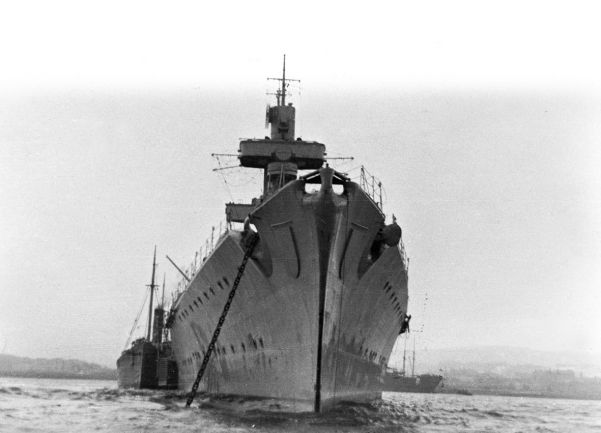6 February
Armed Forces, Navy

The heavy cruiser Admiral Hipper is launched. This ship is part of Germany’s Plan-Z, a plan to build a navy that will be able to meet the British Royal Navy on their own terms.
Admiral Raeder was told by Hitler to develop a plan for a major fleet rebuilding that would be able to defeat the British merchant navy shipping in the Atlantic and be able to suppress the naval forces that would be there to protect them. Raeder planned on doing this by having a well-balanced fleet and dividing his ships in battle groups to strike when and where he needed to. This reflected Raeder’s experience with the Kaiser’s Navy, where German raiders were able to disrupt the seas in favour of Germany. It was a long-term plan that was to be complete by 1948. The following ships were planned:
- 6 battleships of 50,800 tonnes (50,000 tons), plus the Bismarck and the Tirpitz.
- 8 Heavy Cruisers of 20,329 tonnes (20,000 tons), later increased to 12.
- 4 aircraft carriers of 20,329 tonnes (20,000 tons).
- A large number of light cruisers.
- 233 U-boats.
20 February
Spain, German aid

Despite the setting up of a European non-intervention committee, of which Germany is a member, intended to prevent the possibility of international participation in the Spanish Civil War, Germany very swiftly, and secretly, sets about organizing a powerful, semi-autonomous air component for collaboration with General Franco. An example of the lengths to which the German Government is prepared to go in order to deny to the world the existence of the Condor Legion and its commitment of arms and men to Franco can be seen from the decree published in Germany on February 20, 1937. This forbids German nationals to enter Spain or Spanish possessions, including Spanish Morocco, in order to take part in the Civil War. The decree further empowers the Minister of the Interior, Dr Frick, to take the necessary measures to prevent the departure or transit through Germany of volunteers, German or foreign. It should be noted that this decree has been promulgated over three months after the formation of the Legion Condor. Few are deceived by this decree.
